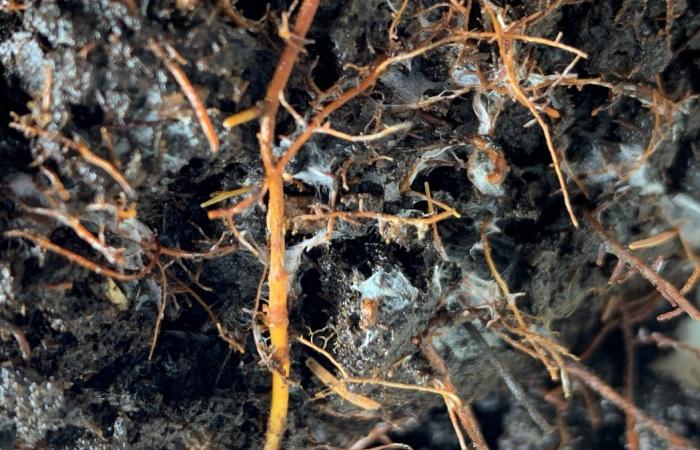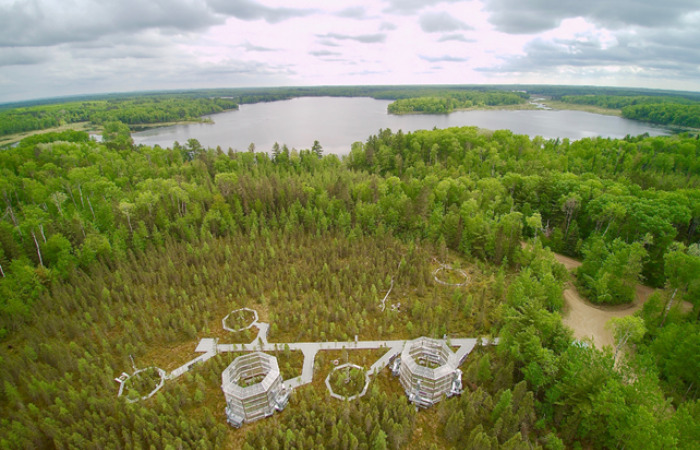-

A belowground snapshot reveals the complex maze of tree and shrub roots and their fungal partners in carbon-rich peatland soils. Credit: Colleen Iversen/ORNL, U.S. Dept. of Energy
-

Scientists use the Spruce and Peatland Responses Under Changing Environments experiment in Minnesota to assess the response of northern peatlands to increases in temperature and atmospheric carbon dioxide. Credit: ORNL, U.S. Dept. of Energy
-

A belowground snapshot reveals the complex maze of tree and shrub roots and their fungal partners in carbon-rich peatland soils. Credit: Colleen Iversen/ORNL, U.S. Dept. of Energy
-

Scientists use the Spruce and Peatland Responses Under Changing Environments experiment in Minnesota to assess the response of northern peatlands to increases in temperature and atmospheric carbon dioxide. Credit: ORNL, U.S. Dept. of Energy
Oak Ridge National Laboratory scientists evaluating northern peatland responses to environmental change recorded extraordinary fine-root growth with increasing temperatures, indicating that this previously hidden belowground mechanism may play an important role in how carbon-rich peatlands respond to warming.
The team working at DOE's whole-ecosystem warming experiment in northern Minnesota found that shrub fine-root growth increased linearly by 130% for every degree increase in soil temperature - a response 20 times greater than other ecosystems. This was driven by soil drying in the usually sodden peatlands, which store one-third of the world's soil carbon.
According to published results, this response could explain why shrub coverage is increasing in these landscapes, which could shade out Sphagnum moss - a key species for carbon fixation in peatlands - and have downstream effects on peatland carbon storage.
"This work helps us understand a previously unknown aspect of these ecosystems, the world belowground," said Avni Malhotra of Stanford University, formerly of ORNL.






